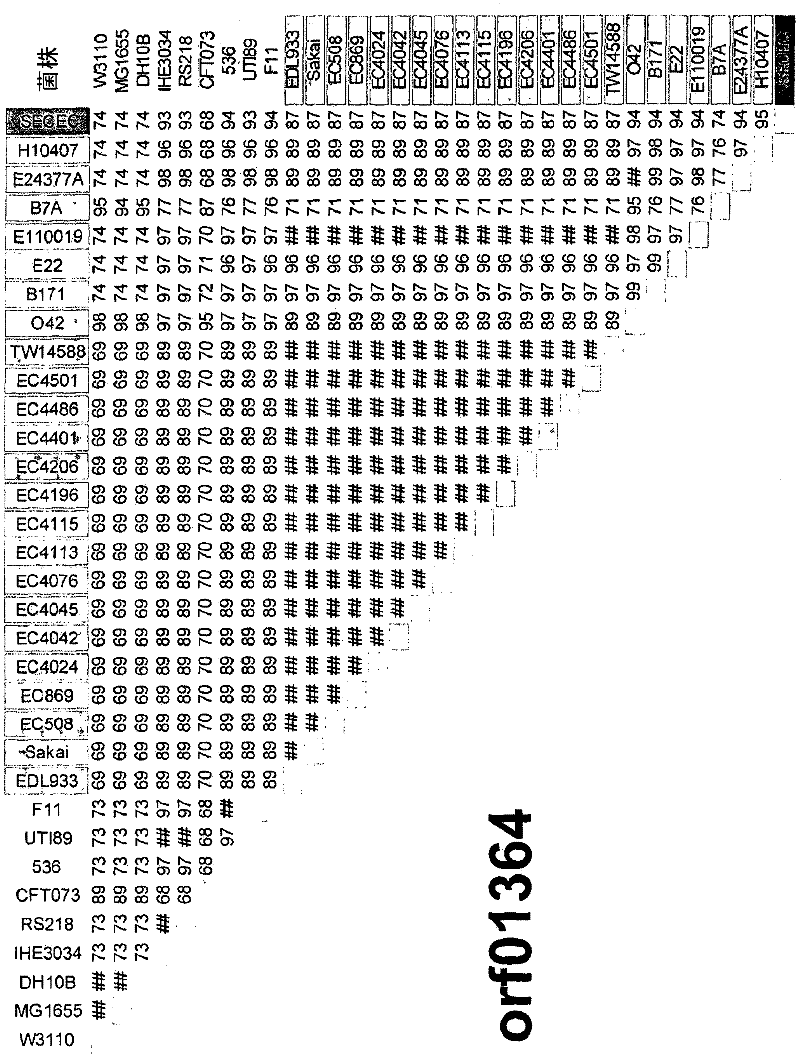Conserved escherichia coli immunogens
A technology of Escherichia coli and immunogenic polypeptides, applied in the field of immunity, can solve problems such as not pointing out conservation
- Summary
- Abstract
- Description
- Claims
- Application Information
AI Technical Summary
Problems solved by technology
Method used
Image
Examples
Embodiment Construction
[0417] each as described in more detail herein, bacterial Ig-like domain (group 1) protein (orf405), influenza antigen 43 (orf1364), NodT-family outer membrane factor lipoprotein efflux transporter (orf1767), gspK (orf3515) , gspJ (orf3516), tonB-dependent siderophore receptor (orf3597), pilin (orf3613), upec-948, upec-1232, A-chain precursor of type 1 pilin (upec-1875), yap The H homologue (upec-2820), hemolysin A (recp-3768) and Sel1 repeat-containing protein (upec-5211) have been expressed and purified and confer protection against ExPEC strains in an animal model of sepsis.
[0418] Sequences of orthologs were obtained from various other E. coli strains.
[0419] Each protein-orf353 (SEQ ID NO:1-amino acid 21-162), bacterial Ig-like domain (group 1) protein (orf405) (SEQ ID NO:9-amino acid 595-1008), influenza antigen 43 (orf1364 ) (SEQ ID NO:27-amino acids 53-629), NodT-family outer membrane factor lipoprotein efflux transporter (orf1767) (SEQ ID NO:41-amino acids 15-457...
PUM
| Property | Measurement | Unit |
|---|---|---|
| diameter | aaaaa | aaaaa |
| adsorption capacity | aaaaa | aaaaa |
| diameter | aaaaa | aaaaa |
Abstract
Description
Claims
Application Information
 Login to View More
Login to View More - R&D
- Intellectual Property
- Life Sciences
- Materials
- Tech Scout
- Unparalleled Data Quality
- Higher Quality Content
- 60% Fewer Hallucinations
Browse by: Latest US Patents, China's latest patents, Technical Efficacy Thesaurus, Application Domain, Technology Topic, Popular Technical Reports.
© 2025 PatSnap. All rights reserved.Legal|Privacy policy|Modern Slavery Act Transparency Statement|Sitemap|About US| Contact US: help@patsnap.com



